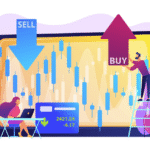Understanding Leverage in Forex: A Double-Edged Sword
What is Leverage in Forex?
Leverage in forex refers to the use of borrowed funds to increase the size of a trading position beyond what a trader could fund with their own capital. In simpler terms, it allows traders to control a large position with a relatively small amount of money. For instance, with a leverage ratio of 100:1, you can control $100,000 in the market by investing just $1,000 of your own funds. This concept is what makes forex trading both highly attractive and potentially risky. Many brokers offer various leverage options, often based on the trader’s experience and the regulatory framework in their region.
Forex trading becomes more accessible thanks to leverage, especially for beginner traders with limited capital. However, the ease of access also increases the likelihood of overtrading or making impulsive decisions. Because leverage in forex amplifies both profits and losses, traders must use it with discipline. Understanding margin requirements, position sizing, and stop-loss strategies is essential when trading with leverage. These tools act as safeguards that help limit downside risks.
To make smart use of leverage in forex, traders need education and risk management. They should always calculate the potential loss before opening any position. Additionally, it’s crucial to monitor positions regularly and adjust them based on market movements. By doing so, traders can manage their exposure wisely and stay in control of their trades, rather than letting leverage dictate outcomes.

The Benefits and Risks of Using Leverage
Leverage in forex offers clear benefits for traders seeking larger returns from smaller capital outlays. For example, with effective use of leverage, a small pip movement in your favor can result in a substantial profit. This is especially attractive for short-term or day traders who aim to capitalize on rapid price fluctuations. Furthermore, leverage enables portfolio diversification even with limited funds, as traders can enter multiple positions across various currency pairs.
However, while the benefits are clear, the risks are equally significant. Leverage can magnify losses just as quickly as it boosts gains. A minor market shift against your position could deplete your account if proper risk management isn’t in place. Novice traders often fall into the trap of using the maximum leverage allowed by brokers, which exposes them to unnecessary risk. Without a solid strategy and self-discipline, they may quickly blow their trading accounts.
It is essential to pair leverage with well-thought-out trading plans and risk controls. Stop-loss and take-profit orders become vital tools in this scenario. These tools help traders lock in profits and limit losses automatically. Furthermore, using lower leverage ratios, especially for beginners, provides more breathing room in volatile market conditions. By respecting the power of leverage, traders can navigate the forex market more sustainably and avoid the pitfalls that often come with aggressive trading behaviors.
Best Practices for Using Leverage in Forex
- To trade responsibly with leverage in forex, developing a consistent risk management strategy is key. The first rule? Never risk more than you can afford to lose. This principle should guide every trading decision. Set a maximum percentage of your capital per trade, though many experienced traders stick to 1-2% of their total account balance. This limit prevents emotional decision-making and preserves your capital over the long term.
- Second, always use stop-loss orders. These tools automatically close a trade when the price hits a predetermined level, minimizing your losses. Take-profit orders also help secure profits before the market turns against you. Combining both provides a more structured approach to trading. Also, traders should constantly review and adjust their leverage ratios based on current market conditions. During periods of high volatility, reducing your leverage can be a smart move to protect your account.
- Lastly, education plays a critical role in responsible leverage use. Traders should consistently update their knowledge of market trends, indicators, and trading strategies. Most reputable brokers offer demo accounts, which are excellent tools for practicing leveraged trading without risking real money. By simulating real market conditions, traders can better understand how leverage in forex affects both wins and losses. Through discipline, continued learning, and strategic execution, traders can make the most of leverage while avoiding its dangerous edge.
Conclusion: Respect the Power of Leverage
Leverage in forex is undeniably a powerful tool, but it’s a double-edged sword. When used wisely, it can magnify your profits and open the door to substantial opportunities. However, when misused or misunderstood, it can lead to significant losses in the blink of an eye. Responsible traders approach leverage with caution, strategy, and a commitment to continuous learning. They respect both the risks and rewards, balancing ambition with prudence.
Ultimately, the key to mastering leverage lies in preparation. Use demo accounts, stick to strict risk management principles, and always stay informed about market trends. By doing so, you transform leverage from a potential hazard into a strategic ally. Remember, it’s not just about how much you can earn. It’s also about how much you’re willing to lose. Smart traders know the difference.
Gold vs Forex: Which Is More Lucrative in Uncertain Times?
Gold vs Forex: Comparing Profit Potential, Risk, and Accessibility The debate around gold vs forex ultimately comes down to an investor’s risk tolerance, goals, and

What is Lorem Ipsum?
Lorem Ipsum is simply dummy text of the printing and typesetting industry. Lorem Ipsum has been the industry’s standard dummy text ever since the 1500s,
How to Read Forex Charts Like a Pro
How to Read Forex Charts Like a Pro Forex charts are the foundation of every trader’s decision-making process. These charts visually display currency price movements

CFD Trading Explained: What It Is and How It Works
CFD Trading Explained: What It Is and How It Works Contracts for Difference, more commonly known as CFD Trading, represent a modern way of engaging
SmarTrade Featured in Manila Standard for Bringing Back Exclusive Trading Seminar to Manila
SmarTrade Featured in Manila Standard for Bringing Back Exclusive Trading Seminar to Manila SmarTrade has once again proven its leadership in financial education as it

Forex Broker: How to Choose the Right One
Choose the right Forex broker for your trading journey with essential tips and insights to enhance your trading experience and success.
